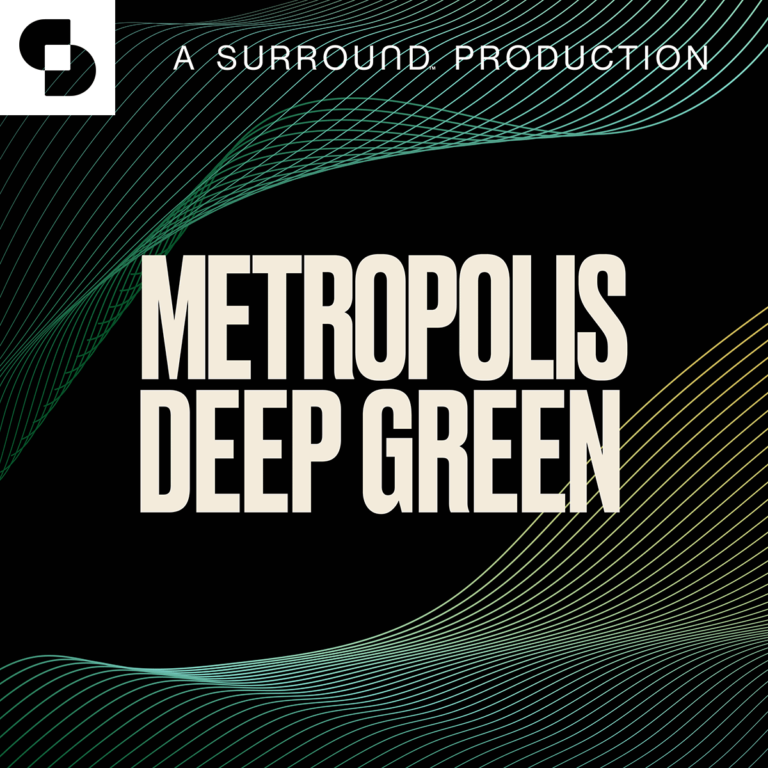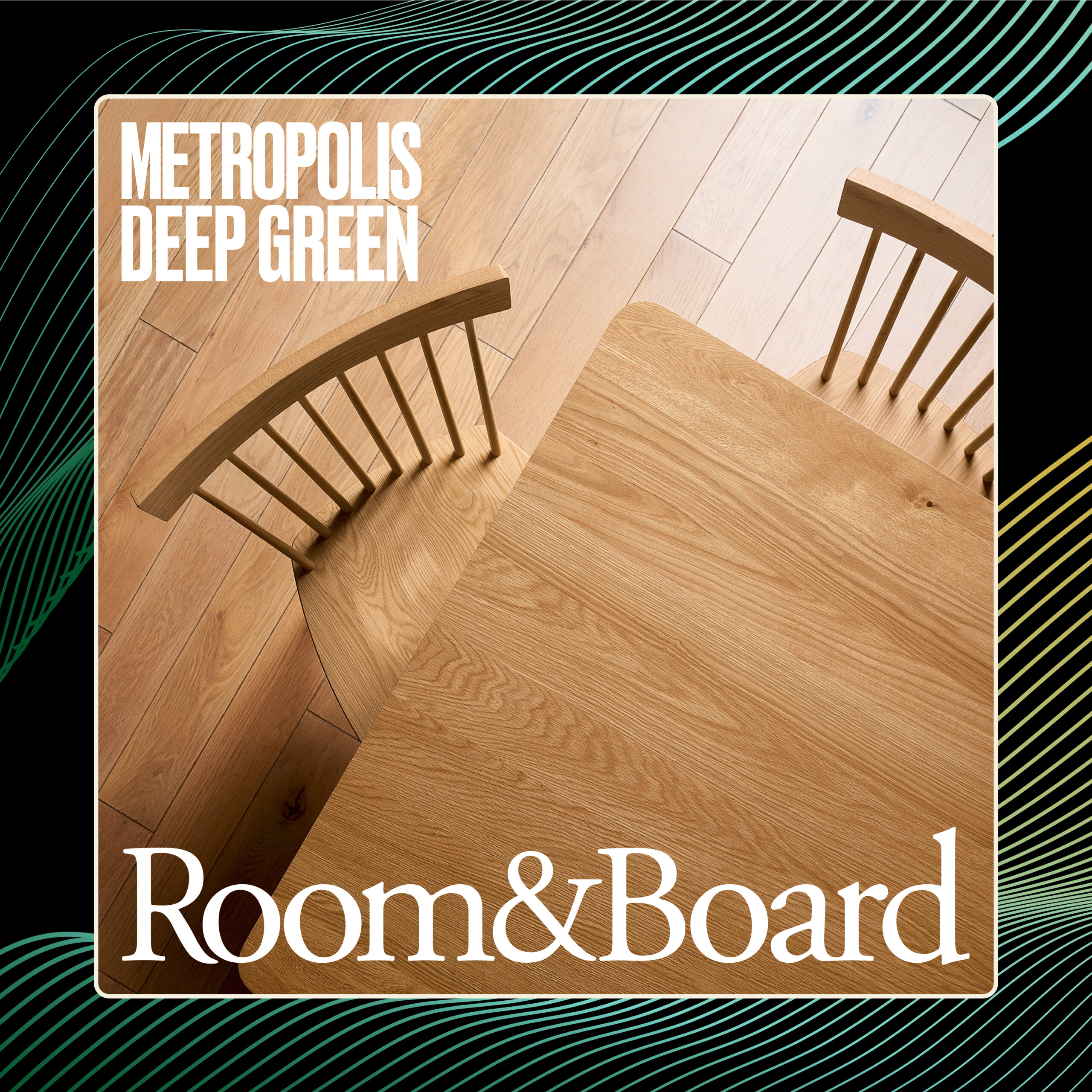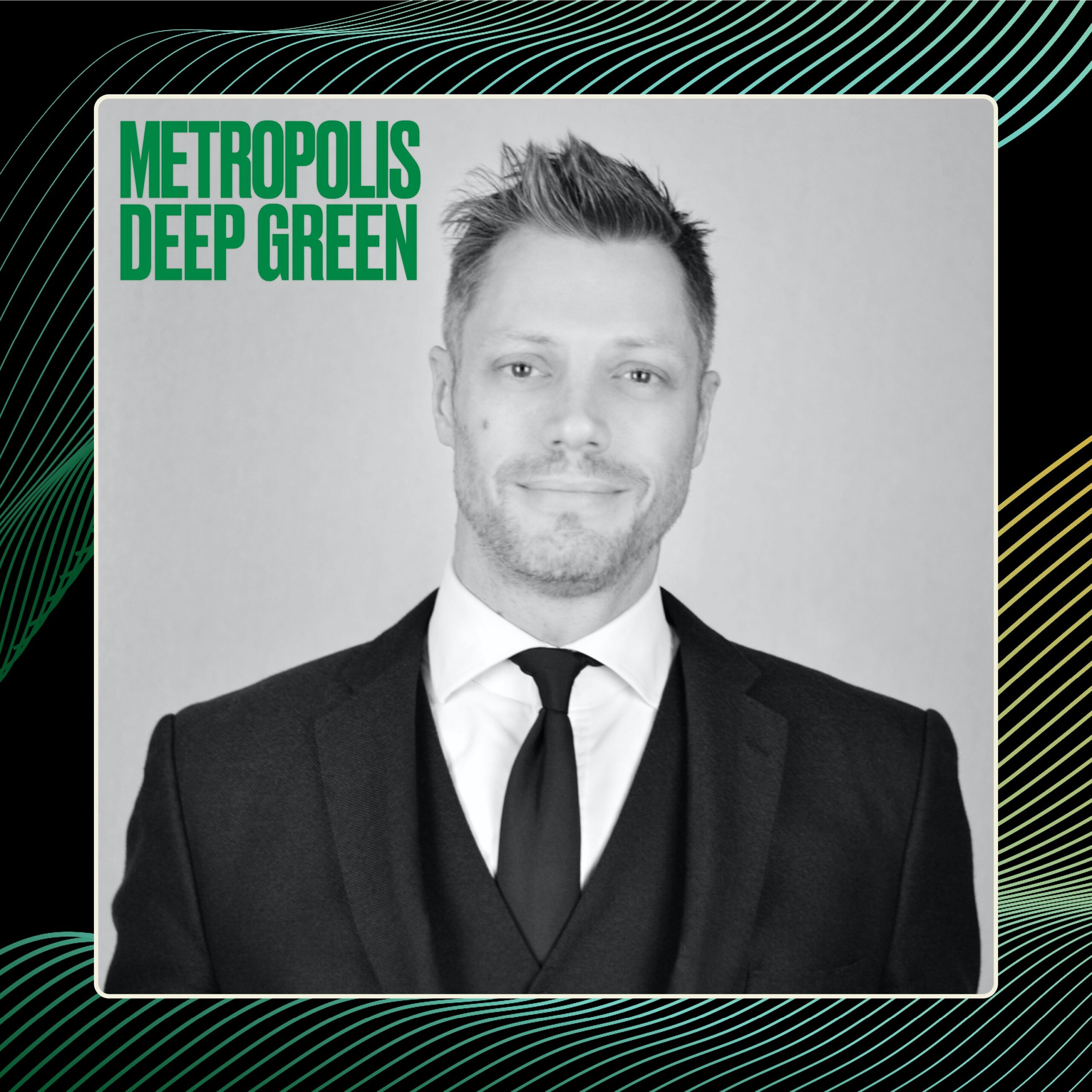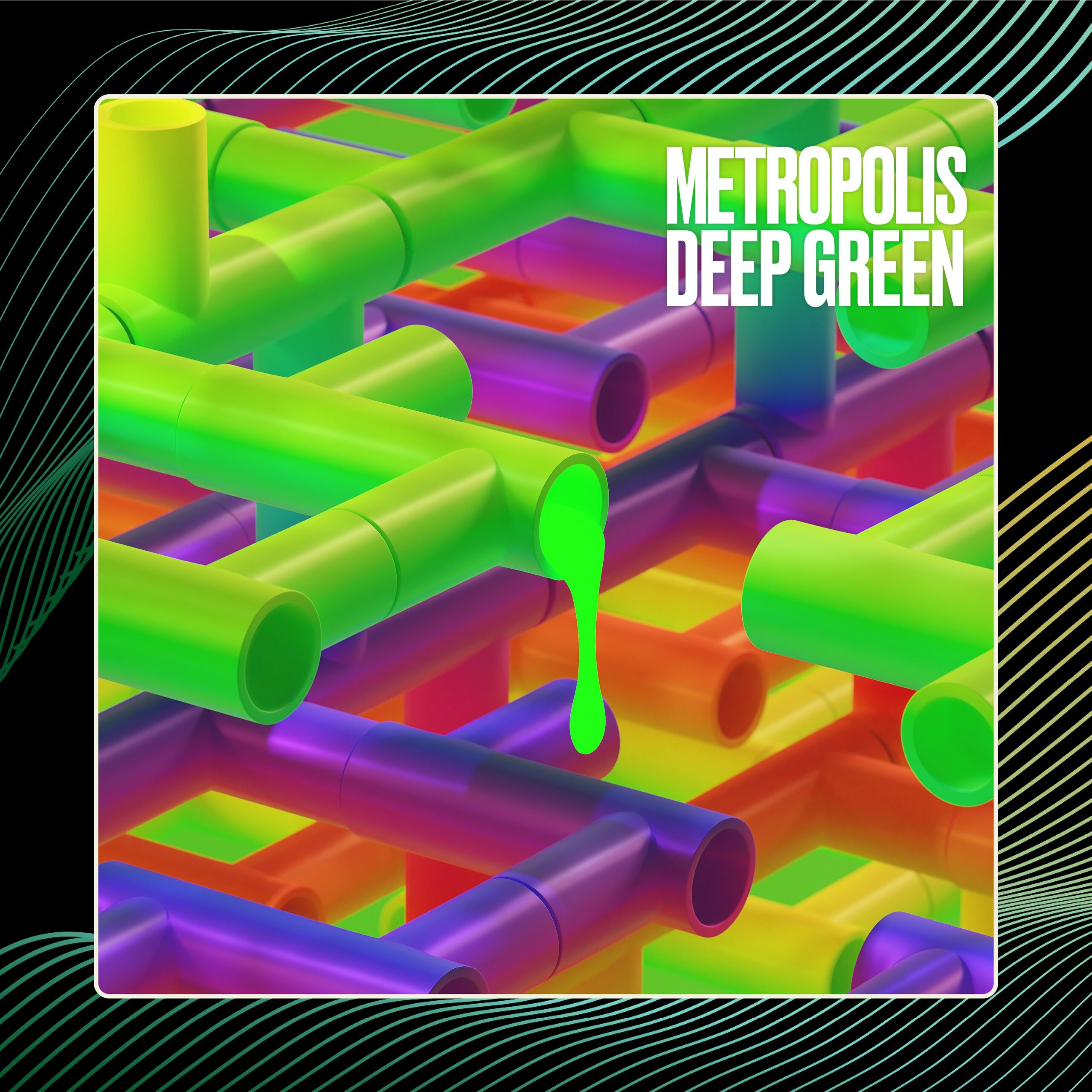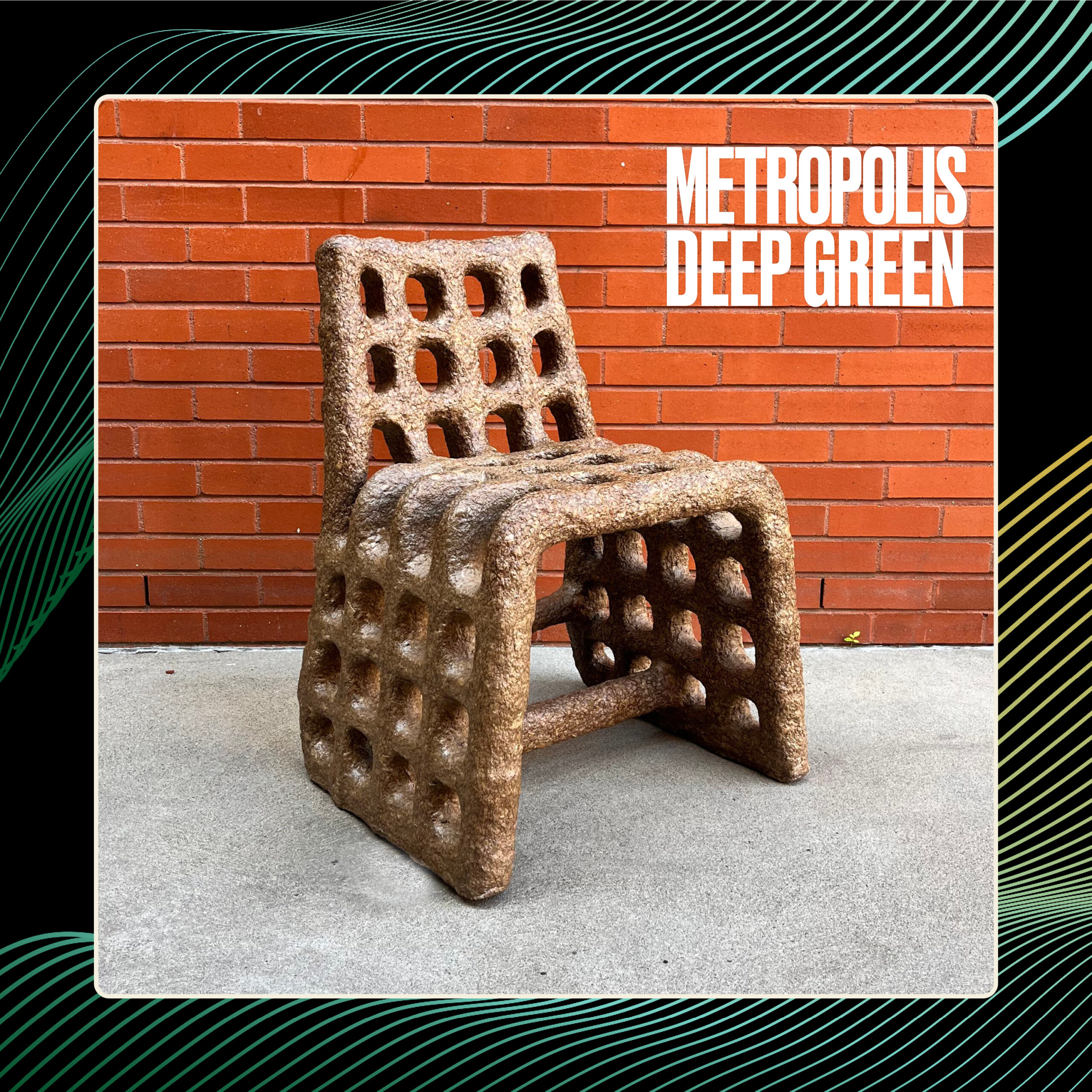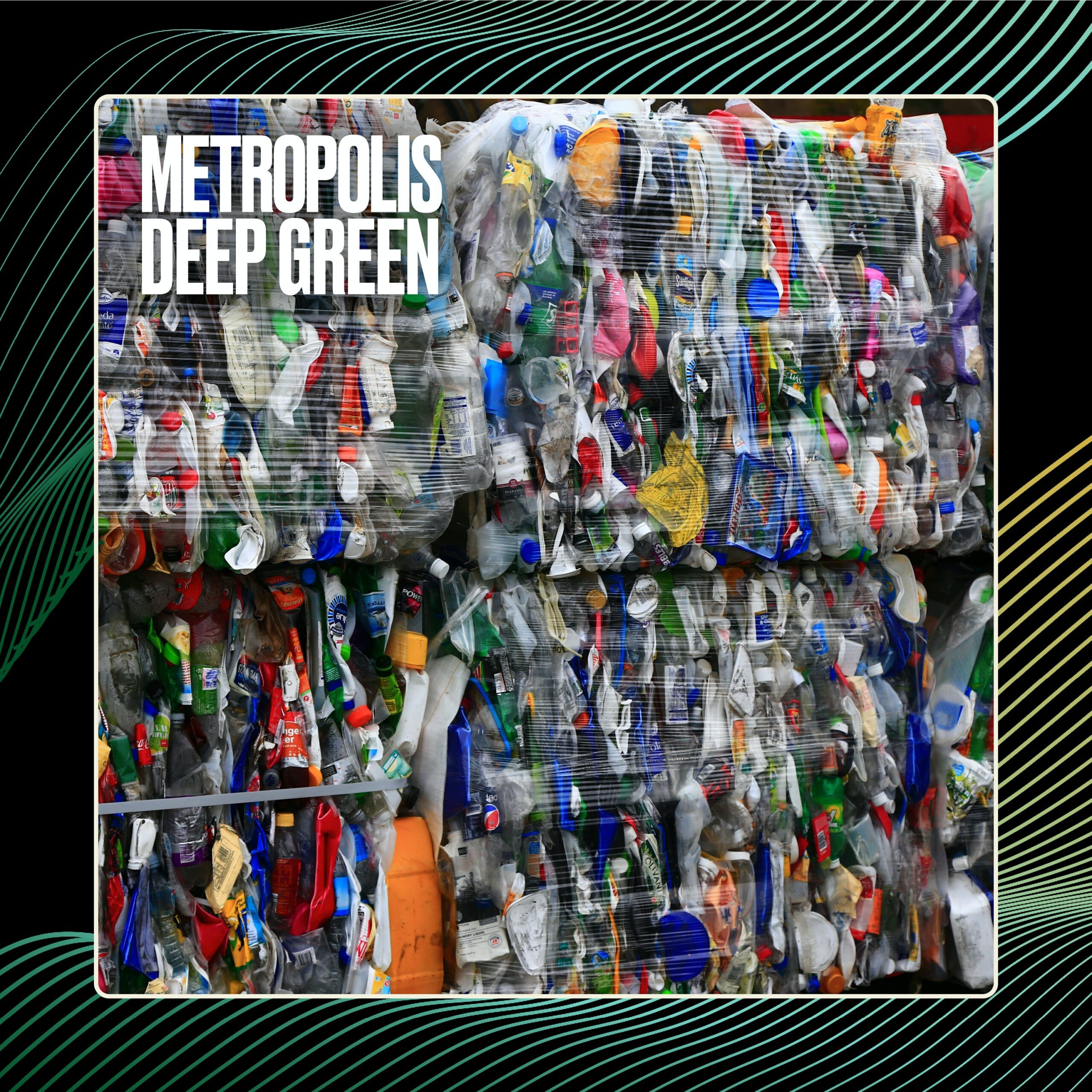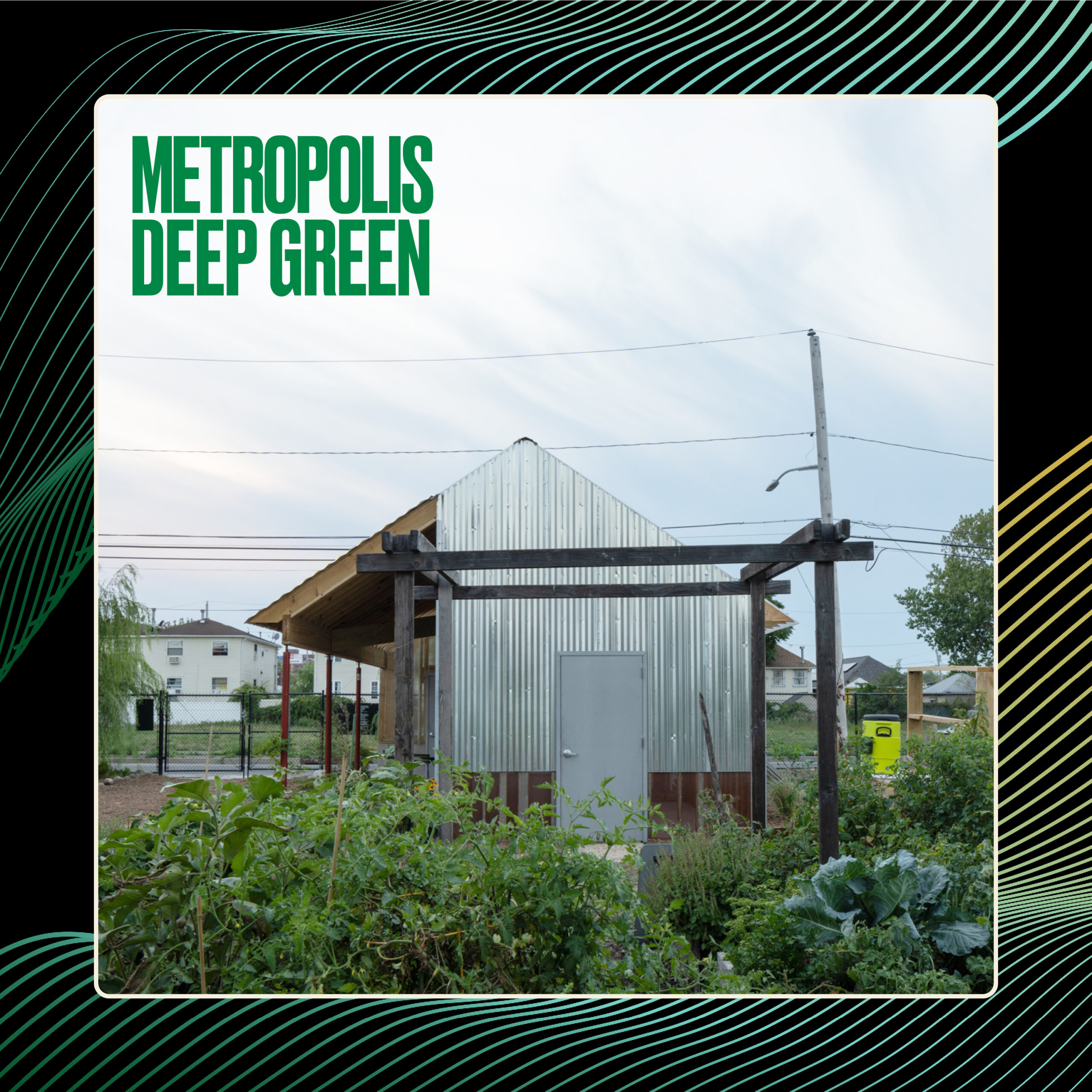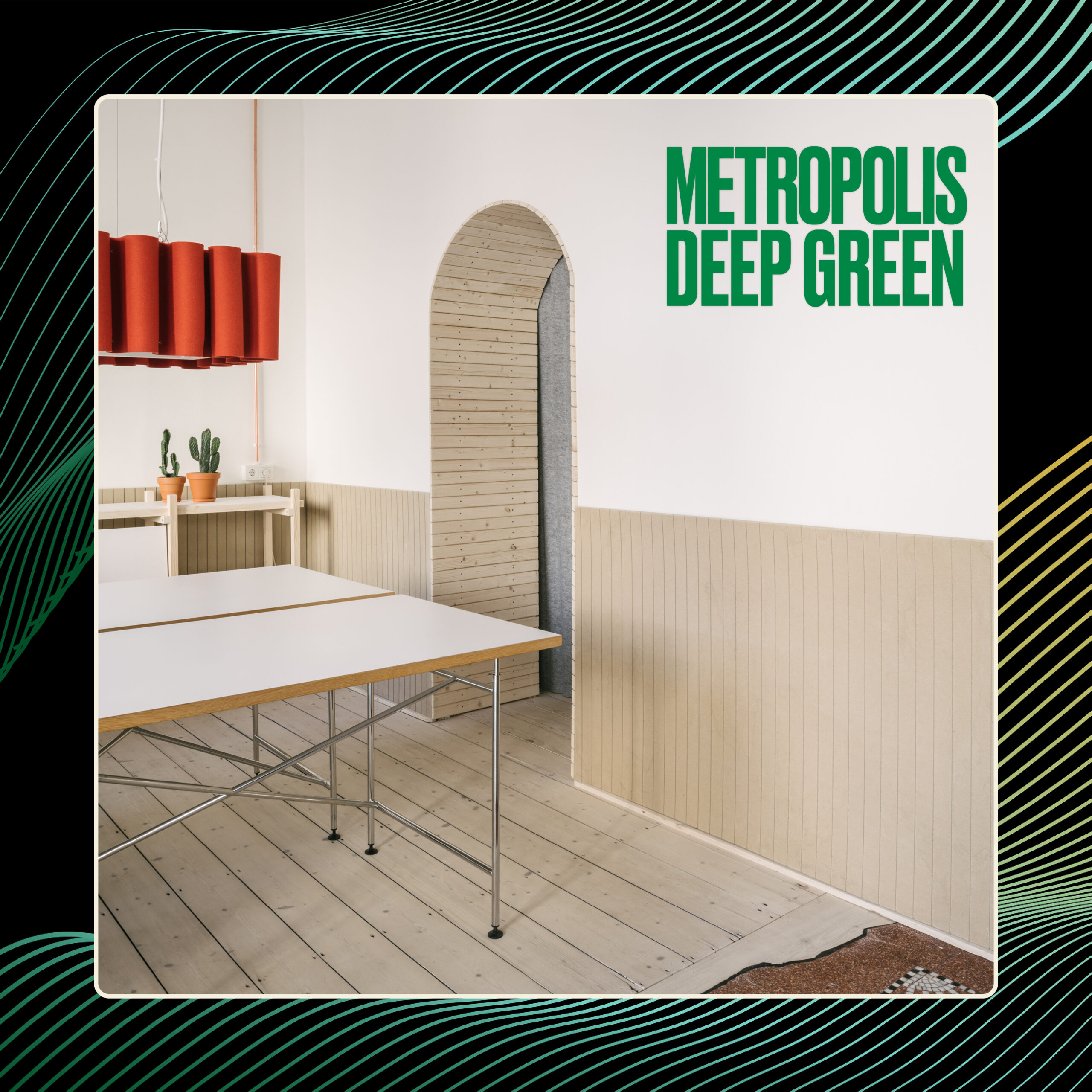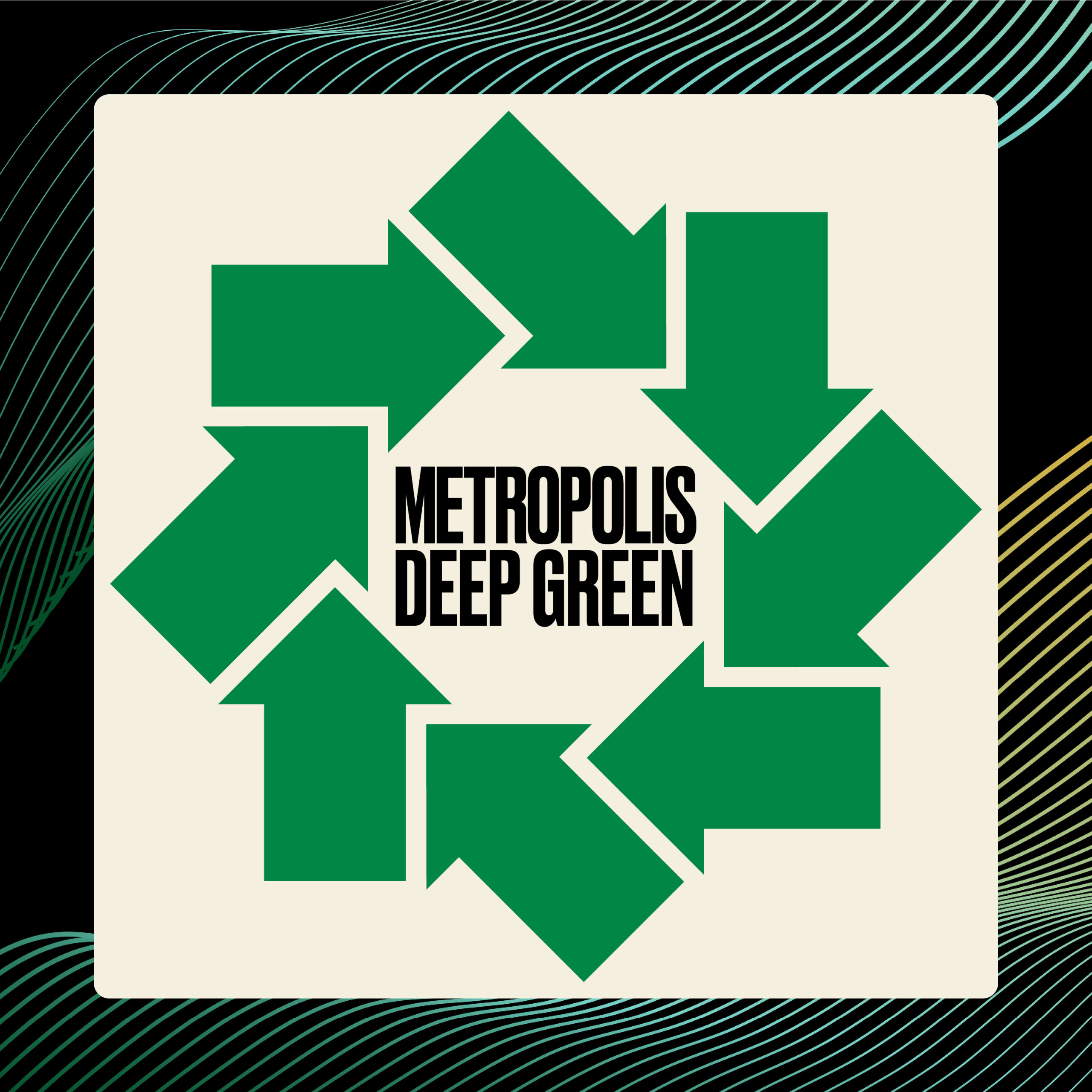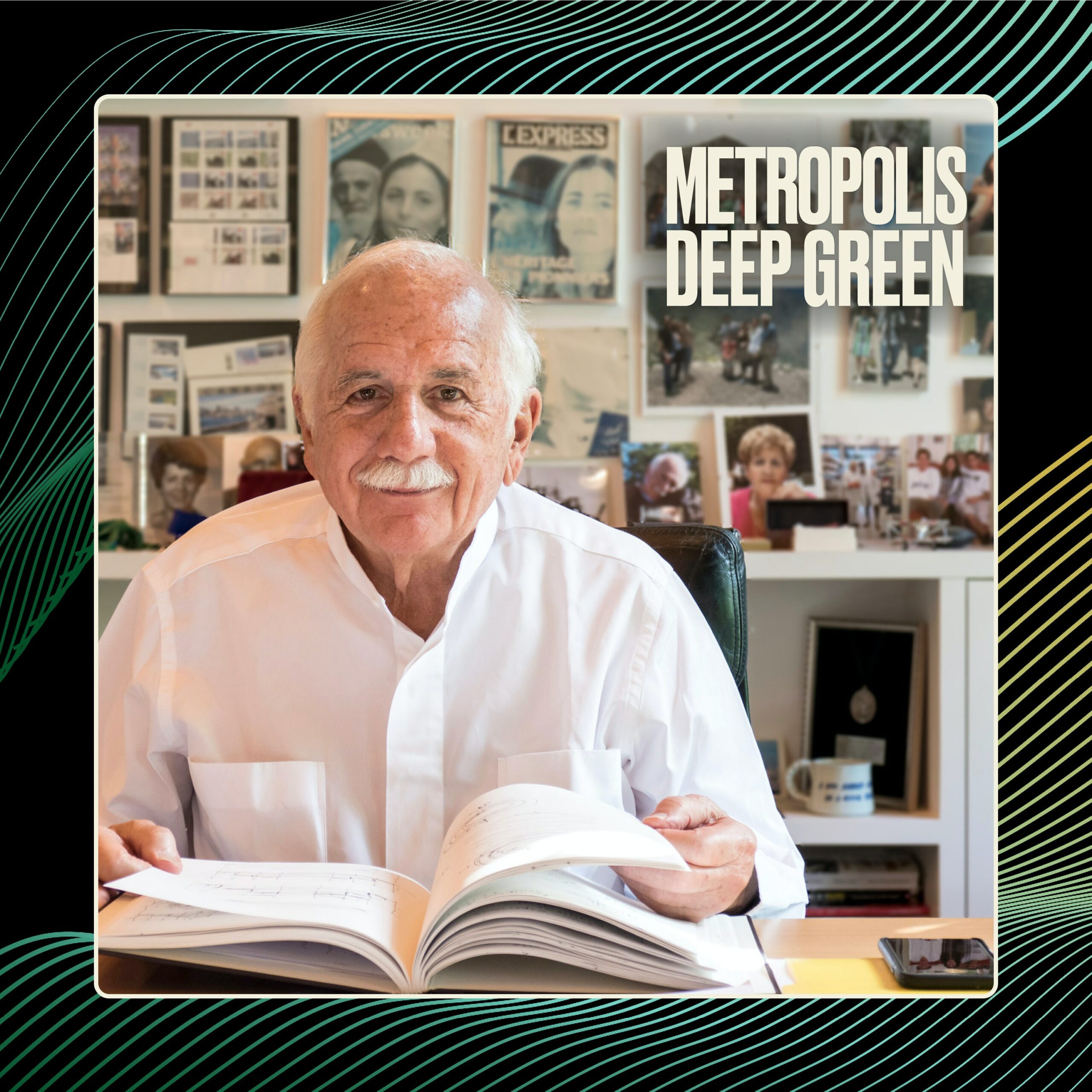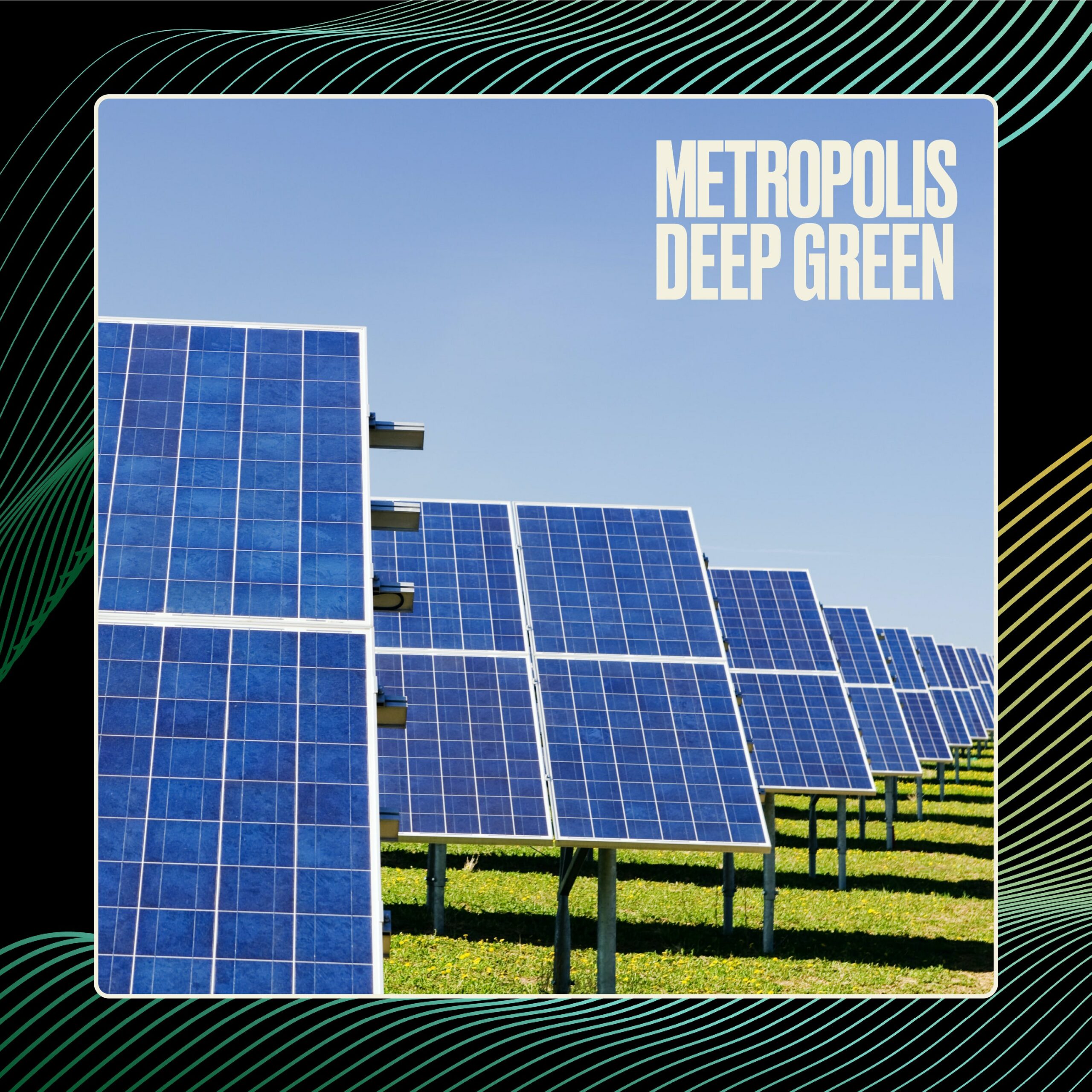Should one of the United States’s most iconic bridges, the San Francisco-Oakland Bay Bridge, be turned into a cicada farm to raise insects for food? Yes, if you ask David Rico Gomez, who is graduating this year with a degree in architecture from the California College of the Arts.
David is one of the Metropolis Future100, the 100 students we selected as the top architecture and design students graduating in North America this year. And he has something in common with a lot of his peers: a commitment to sustainable architecture and a willingness to search for extraordinary solutions.
In this episode, Metropolis editor Ethan Tucker speaks with David and four of his contemporaries from the Future100 list. Some of their ideas: building floating homes for extreme weather events; advancing rammed earth for interior uses; and creating hyper-flexible housing for traveling nurses to avoid carbon emissions associated with renovation or demolition.
Resources:
Presenting The 2022 Metropolis Future100
Future100: Student Designers Explore Radical Sustainability
Connect with Metropolis:
Instagram: @metropolismag
Facebook: facebook.com/MetropolisMag/
Deep Green is a production of SANDOW Design Group.
[00:00:00] Avi: Welcome to deep green, a biweekly show about how the built environment impacts climate change and equity. Deep Green is brought to you by Metropolis . I’m your host Avi Rajagopal . Buildings are some of the biggest things we make as human beings. So, if you want to know how we can do better for the environment and for all life on this planet, you have to understand buildings and cities and all the things that go into them. And that’s what we want to help you with here at Deep Green should one of America’s most iconic bridges. The San Francisco Oakland bay bridge be turned into a Cicada farm. To raise insects for food? Yes. If you ask David Rico Gomez, who is graduating this year with a degree in architecture from the California college of the arts, David is one of the Metropolis future 100, one of the hundred people we picked at Metropolis as the top architecture and design students graduating in north America this year.
[00:01:23] And he has something in common with a lot of his peers. A commitment to sustainable architecture and a willingness to search for extraordinary solutions. Today, we will hear from David and three of his contemporaries from the future 100 list. Some of their ideas, a Canadian first nations community that has been ravaged time.
[00:01:47] And again, by extreme weather events should consider building floating homes, Ramed earth, which is a carbon sequestering building. Technology could point the way to a new [00:02:00] ecology centric, architectural aesthetic. Housing solutions for traveling nurses, which is not only a necessity in our post pandemic healthcare landscape, but might hold solutions for migrating climate refugees in the decades to come.
[00:02:19] This, I think is the next generation of sustainability, not focused on optimization or incremental changes, but rather radical response. That comes out of a systemic analysis of our problems. Here is Metropolis editor, Ethan Tucker, with our future 100 students,
[00:02:44] Ethan Tucker: the inventive designs of David Rico Gomez, an undergraduate architecture student at California. College of the arts are planned for a world degraded by climate change. From using waste products to rewild post-industrial landscapes in the east bay region, to a colorful proposal to transform the San Francisco Oakland bay bridge into a massive Cicada farm, David’s plans are informed by the acute sense that California is on the precipice in order to survive even greater ecological disruption, he argues that humans must figure out a better way to work with nature and not against it. David, thank you so much for joining us here on Deep Green. The first thing I wanted to ask you about is these two projects in your portfolio. That really struck us when we were looking through the future 100 and seeing how students were responding to climate change and coming up with new ways to think about sustainable design, these two projects, campgrounds and bridge of nymphs interrogate the relationship between the human and non-human users of a design space. How did you come up with these projects and what, what is it about designing for non-human users? That was interesting to you.
[00:03:54] David Rico Gomez: Bridge of nymphs was for a studio named sanctuary, and we were repurposing [00:04:00] the San Francisco bay bridge for reuse. So we were anticipating new construction leaving like the old bay bridge as, as a structure to kind of build upon, instead of just get rid of in working in a studio that set a hundred years in the future. Really, you have to like interrogate what you see. The future is gonna look like for us, it was kind of grim. We saw destruction of wildlife, the kind of collapse of conventional farming techniques due to climate change, changing where these things are possible. Water management, you know, water becoming more scarce and not being able to provide enough water for these kind of conventional agricultural methods, livestock farming, Mona culture. So the world that we envisioned was one where everybody had turned to synthetic protein, you know, beyond meat, vegan stuff that doesn’t use animals anymore, which should be a great kind of vision. Getting away from the livestock agricultural production means less methane production, less water usage. So in that project, what we, what we realized was that a kilo of water would produce a kilo of protein with, with most insect farming techniques. So that building and that project, the relationship to insects or to animals, really, it was, it was definitely still in this extractive mindset of using them. It was a farm, but I think the combining thread there was, we had began to describe the upbringing of the cicadas over their 17 years life cycle.
[00:05:51] We were starting to, to think about like what these insects would need. How do you care for insects from larva to nymph ? And I [00:06:00] think that idea of caring for animals kind of began to be developed and began be explored a lot more in the next studio that I did, which was materialities of care, which campgrounds was made for that one from the start that studio was a housing studio and its essence building out a residential scale for both humans and some sort of more than human animal.
[00:06:24] So if bridge of nymphs was set in like. Kind of future vision of climate dystopia, climate collapse. Campgrounds was in this present day reality where that dystopia or that collapse kind of has already happened. This is suburban Fremont where cited along Alameda Creek. That Creek has levies completely and closing it.
[00:06:52] If you’re on the street in the neighborhood, you really can’t tell. That there’s a, a large body of water moving next to you. And what that project really was looking at ways of reconnecting that neighborhood with the existing environment, reintroducing wildlife, that used to be in that neighborhood, really kind of like undoing this, doing this action that had been done to sprawl and to cover up this original land, we were designing architecture that resisted these notions of suburban sprawl and kind of blankets of concrete. Campgrounds was a way to build architecture that wouldn’t last, that could have a lifetime that would degrade with time and kind of become a scaffold for life. And that was like a vision that I think has become a large part of my philosophy or view towards architecture as I’m finishing up is how can I make architecture that won’t leave these scars on the earth.
[00:07:57] Ethan Tucker: I think that phrase you hit on there, architecture as a [00:08:00] scaffolding for life is really sort of what we wanted to talk to you about in some ways designing for human beings traditionally tends to mean, as you said, a lot of asphalt, a lot of paving, a lot of in permeable surfaces. What were sort of the, the textures and materials that you needed to think about when you were designing for non-human inhabitants?
[00:08:23] David Rico Gomez: I think that the best thing that I learned about designing for animals for non-human things was something that Joyce Wang from ants on the Prairie told my class when she gave a lecture to us. And it was basically following this tenant of build it and, and they will come. It’s really hard to. Design just for one animal, as long as there’s like a structure and a shelter and nook or a cranny, you know, some form of life is going to find that space and occupy it and live in it and kind of form its own niche.
[00:08:59] I think the, the first thing that comes to my mind is kind of letting go of any notion of like prioritization of one species over another. You really have to. For the totality for the entire ecosystem, because at the end of the day, maybe not what you had in mind, but something out of that ecosystem is gonna occupy that space.
[00:09:23] I think the challenges of. Designing for, for non-human things is that we can’t ever kind of know what these experiences and you know, how they experience these spaces. So really, I think all that we can do is create a variety of different spaces in quotation marks that are attractive are for. Anything to walk across, crawl across, you have to think about fun guys, decomposers, plants rooting things.
[00:09:58] You know, everything wants to [00:10:00] grow and everything will grow. Especially if you’re designing with materials that can degrade and things for life to kind of jump off of or grow upon.
[00:10:10] Ethan Tucker: So what were some of the materials for campgrounds? I, I know it was some repurposed building materials and off cuts. Do you wanna just elaborate on that a little bit about how it sort of sets itself up for decomposition or reuse? In some way.
[00:10:26] David Rico Gomez: We, we were going for only using recycled wood recycled lumber. We would want like non-treated lumber. The idea is that as that wood would decay and would rot and would decompose that that rot is what mushrooms grow on. And then when those mushrooms kind of die, they’ll they turn it into dirt, all these things.
[00:10:51] And then the, the actual form of building was this variated stacking maneuvers that opened and closed the spacing of the wood used that variation in spacing was what was kind of creating all of these different spaces and interiors, both the larger human oriented spaces and the smaller animal only experiences.
[00:11:19] Ethan Tucker: In looking at both of these projects, bridge of nymphs and campgrounds, you know, we sort of couldn’t help, but notice that they’re both about, you know, reusing or repurposing building materials in the case of bridge of nymphs, of this massive piece of, of infrastructure that it seems like may, you know, outlast the, human habitability of the bay area in and of itself. And I wanted to get your thoughts on, but as a young architect, you think the role of architecture and design is in the face of climate collapse. Do you see. Your role as picking up the pieces and finding something to do with the ruins of an industrialized society, or is it about building ways to prevent the further [00:12:00] destruction and degradation of the natural world?
[00:12:04] David Rico Gomez: You’re completely right. This motif for this, this idea of reuse, repurposing, kind of using what’s already there. It’s absolutely like a reaction to, to the reality of what building a building means. I think before we can ask what the role of architecture in the face of this collapse is I think we, we need to interrogate, like what architecture’s role in kind of creating this.
[00:12:36] This reality is architecture is pretty unarguably, one of, one of the most like extractive and polluting industries worldwide from the, the production of building materials to the transportation of these materials, to the extraction of these materials are, you know, the factories that make the chemicals to make concrete. All these things are horrible for the environment and have been largely kind of caused by this need to build or this desire to build. This desire to, to develop. So to answer the question, I think the role of architects and of architects and the future, at least like the role that I see myself as playing is picking up the pieces because we’re the ones that kind of broke it.
[00:13:23] We’re the ones that, that made those pieces. And it’s our job to really use these broken pieces to fill in these cracks and these, these spaces and use what’s there to. Further destruction. I really think that if we wanna practice an architecture that is sustainable and future oriented, it’s really about de-growth and limiting this rampant development and rampant expansion and sprawl, and really kind of just using what we have using what’s there using [00:14:00] what’s already been built.
[00:14:12] Ethan Tucker: Driftwood a project by Sophie Clapperton who recently received a master’s degree from the Boston architectural college takes a deeply researched approach to climate adaptation in one of the hardest hit and most disadvantaged places, a proposal for the development of a new amphibious community The Kashechewan first nations community of Northern Ontario.
[00:14:31] The project’s groundwork was informed by extensive interviews with members of this community. Which is plagued by annual floods that are growing more severe as the Arctic warms. Her work shows the importance, not only of physical resilience in the face of worsening natural disasters, but the ways designers must work to support social resilience as well.
[00:14:50] Thanks so much for joining us here on Deep Green . We’re really excited to talk to you about the drift wood project and, and your more broadly. So we were really impressed about this project when we were reviewing the portfolios for the future 100. Driftwood proposes housing that adapts to frequent floods in indigenous communities in Northern Canada. Could you start by explaining to us and our listeners what you were researching and how you came up with this design in response to this, this very specific set of circumstances that you were investigating?
[00:15:22] Sophie : Of course, thanks for having me on today. So driftwood as my thesis project actually came about from an architectural rendering competition that I participated in during my undergraduate studies.
[00:15:33] And that particular competition had asked participants to design a home for any single region of their choice, which responded to the region to make environmental conditions through architecture, engineering. And so in researching different areas to focus on for that competition, I stumbled upon an article about Kashechewan and the community struggle with annual flooding.
[00:15:55] And so to provide some context for listeners, Kashechewan a very small and remote [00:16:00] indigenous community in Northern Ontario, Canada. And they experience intense seasonal flooding each spring, roughly six feet out water floods, the region as a result of ice damming in the James bay as the ice melts and breaks the chunks of ice clog the river outlet and with nowhere else to go flood waters, inevitably move on to shoreline regions, Kashechewan being one of these.
[00:16:23] The waters movement incredibly fast and giving construction ones, remote location and lack of road access. The 2000 residents actually have to be airlifted out each year to various areas of refuge. And so, as you can imagine, evacuations are not only extremely expensive, but that’s also very traumatic head for residents. They’re forced to abandon their homes for months at a time, they have to stop school and work. And then when they do finally get to return home, there’s the anxiety around not knowing what the leader be returning home to, and then parallel to that issue of flooding in which so many other indigenous communities is also still grappling with decades worse, the systematic oppression and the socioeconomic realities related to their indigenous heritage and identity. So, despite not being indigenous myself, nor having ever even heard of Kashechewan before, despite being in Ontario myself, I was very affected by the severity of their circumstance and how Little’s been done to support the community across all sectors. But unfortunately, the nature of that rendering competition didn’t allow me to really dig into the issue further beyond simply preparing a rendering for a very basic home. And so I’ve checked this idea in the back of my mind for years now, waiting for the opportunity to revisit it and give it the time and understanding it deserves. So when my thesis selection came about, I knew immediately that I wanted to return Kashechewan however, in developing my proposal from the very beginning, I knew that an order for the proposal to be successful, it’d have to [00:18:00] do two things.
[00:18:01] First, it obviously have to adequately respond to flooding in the region. We provide a long term solution to eliminate the annual evacuations altogether, but second, it also had to involve the community and it really had to consider the daily life of the people there in their values. As a creed community, amphibious structures aren’t necessarily anything new.
[00:18:23] We’ve had floating homes for decades and firms like V HCA had successfully built in OUS homes in the UK. But the problem I identifying with those precedents is that they were largely designed in isolation. So they rise and fall as blood water to move in, but they lack any sort of connection to surrounding structures and resources and all that’s fine for areas where flooding surges and dissipates in a matter of hours.
[00:18:48] That’s really not effective for a community like Kashechewan, where floodings gonna last for months of a time, you know, how are people gonna access school and work? How are they gonna get their groceries? How are they gonna socialize and engage with one another? These are all things that I was concerned with.
[00:19:04] So that was really the nucleus for my project. I needed to create an interconnected network of Ify structures, not just a single or structure. That allowed for consistent movement and access within the community, despite the flood conditions. And I really wanted to allow for that sense of normalcy, that they have the rest of the year to continue into the periods of flooding and to soften that transition from dry flood period.
[00:19:30] And so ultimately what transpired then was I designed a new canal system for opportunity, which would serve as both a flood controlled strategy, somewhere for the water to flow and go. but also as a new mode of transportation within the community, because right now the water with respect to flooding is really viewed as a negative thing to detriment to the community, but it doesn’t have to be that way.
[00:19:54] If reworked and resurface, it can really serve the community and be an [00:20:00] asset to those people. And so by introducing boats year round, in addition to cars and the existing roads, I can soften that transition from the dry to the flood period. And then the amphibious buildings are secondary to that. And they’re located along the canals oriented towards the water then instead of towards roads and each building then is connected to the canal and to each other, by a series of floating pro of docks, as well as a secondary layer on the second floor and design a louvered police system, which would create an elevated walkway in addition,
[00:20:39] And so these promenades and walkways then sort of act in place of a traditional sidewalk effectively creating ARU state for the community then during flood periods, and then sort of zooming in on the structures themselves when considering the design of these, these structures, you know, I had all the usual parameters to contend with know things like size, how the space is gonna be laid.
[00:21:03] but I also had the additional layer of isolation to consider with the community being so remote. It’s hard to say we’re gonna bring people in to build this community. When that community itself has a labor force, that’s not being utilized. It’s also super expensive to say that we’re gonna bring in a bunch of labors to build a community like.
[00:21:25] So real focus for me was on making this a community built project, similar to a habitat for community model, where material will be brought in via where I use word structural inte insulin panels brought in and essentially just erected by the community rather than having them have to start from scratch.
[00:21:46] And so what that does is it engages the community in the construction of their home. Reintroduces a sense of ownership, and we’re also putting time and money back into the community and reinvigorating their [00:22:00] economy, me as well, and giving them skill sets that they can pass along for generations. And then the structures themselves were designed on floating foundations, similar to a floating home that you might see in Vancouver or Seattle.
[00:22:16] There are ETS, both work foundations. With a building erected on top of that, and they’re held in place with posts. And then as the water comes in, structure will float and they’ll go back down as water’s receded, they’ll be held in place. And then on the inside of each of the buildings, in order for the buildings to serve the community for as long as possible, they needed to be as adaptable as possible, too, on the interior, just as they are on the exterior.
[00:22:45] and so the way that I achieved this was essentially concealing all of the amenities for the space. So kitchens furniture, wall partitions. You name it within the wall, cavities and structure of the building itself. So as the use of the building changes, the users can slide wall partitions away. They can put furniture away, they can pull it out and they can really morph that space into what they need.
[00:23:12] So while it might be used as a home for say a decade as the community changes and evolved. It could then become a cultural center. It could become a store, it could become a school. So the buildings themselves then create a sense of resiliency for the community as well by prolonging their use. And that’s really the core of this proposal is finding an effective solution for the community to allow ‘ to stay here during flood period, while making it as effective and long term or solution as possible.
[00:23:48] So looking at their current needs, but also looking at their future needs. And that’s really something that when I was designing this while I was focused on construction, one specifically that’s really a [00:24:00] transferable proposal and solution to any number of communities across north America in the world, to be quite honest.
[00:24:07] Ethan Tucker: Um, I’m curious, you know, about sort of what your process for, for the research here was in terms of talking to members of that community, assessing their needs and their abilities. And seeing what role you can play there. You know, what, what did you learn? What might you have missed if you hadn’t taken that intensive research element?
[00:24:26] Sophie : So, as I mentioned before, I’m not an indigenous heritage. And so it was really important for me as an outsider to connect with the community ands leaders early on in the process and throughout the process to gain a proper under standing of life Kashechewan and how I could be respectful of their free identity within my proposal.
[00:24:47] So right off the bat, I reached out to their chief Leo Friday, and I spoke to him about the project and about sort of where I wanted to go with things. And then throughout the process, I’d check in with different numbers of the community and, chief to sort of give them an update as what I was thinking, get their feedback on what was important and, you know, proposals have been made in the past by governments to relocate the community.
[00:25:11] Completely out of the flood point, but that’s not what the community wants. You know, this is their ancestral land. It’s their cultural land. They have a history here and they have a relationship with the land in a way that we, as non-indigenous Canadians can’t understand. And so ultimately they don’t wanna leave. and that was something that was interesting to learn because you know, right off the bat, we might assume sure. Let’s just move them out of the region. That’s a fine solution, but it’s not, and it’s not what they want. They wanna figure out a way to remain there despite the flooding. So I couldn’t then in my proposal just simply say, well, I’m gonna move you on the edge of your land, out of the flood. Plain says that’s not effective and that’s not what they want. And then in developing the design further, some of the things that I learned that were really interesting were. [00:26:00] Things like that the community still relies largely on hunting and fishing per subsistence. It it’s both a way for them to continue their cultural traditions.
[00:26:08] And it’s also a necessity given a neuro vocation. So moving them from those lands could potentially erase that aspect of their lives. And so prior to speaking to members of the community, I really had no idea just how relevant those pre traditions are still to this day. You know, I wasn’t sure if they still spoke the pre-language or how traditional ceremonies.
[00:26:31] And so I was really pleasantly surprised actually to learn just how important pre heritage is still to the community and how hard they’re working to preserve and pass along their traditional ways of life. For instance, we, as nonindigenous people might conjure up the image of, of a TP where it to that indigenous architecture.
[00:26:49] Right. But we would largely think of TP as a thing in the past. However, I was really surprised to learn that Kashechewan TP are still very much used in their daily life and are actually so popular that almost every home Kashechewan has one in their backyard. But the TP aren’t used as a home anymore. They’re used for spiritual reflection and cultural gatherings. So for example, they hold tobacco ceremonies before they go out hunted, or they could be a place for meditative reflection individually. So in learning some of this, I knew that these were things that I had to integrate respectfully into my proposal so that the community could continue to practice these CRE traditions both during dry end flood period.
[00:27:34] And had I not spoken to the community. I, would’ve never known that this was such an important part of their life and routine simply because it’s not something that I have in my life. You asked why it’s so important that designers spend time learning about the people we’re designing for and simply put it’s just that I’m an outsider. So my perspective on what the community might need from a building or what it should look like, or how it’s made. Is very [00:28:00] different from how the people who actually live there might feel, it’s their land, it’s their homes at the end of the day. And if it doesn’t serve them in their lifestyle, they’re not gonna embrace it.
[00:28:09] Then ultimately it’s a wasted effort cuz they’re not gonna use it. And for decades, we, as a white society have tried to erase indigenous culture and works our ways onto them. And has it been successful? Absolutely NOT. So moving forward, we need to then learn from that past. And instead of trying to force out our ways, or in this case, our architecture onto different communities, we need to include the local people in the conversation and allow them to guide the process. Because at the end of the day, we’re not the ones who are gonna be living there.
[00:28:45] Avi: Deep Green will be back after a shark commercial break.
[00:28:53] This episode of Deep Green is brought to you in partnership with Caesarstone the new pebbles collection of services from Caesarstone takes its inspiration from nature, and is part of the company’s commitment to sustainability .YAEL GoldSchmidt, senior marketing manager at Caesarstone is here to tell us more. What is the Pebble’s collect?
[00:29:14] Yael : Thanks Avi,, I’m very happy to share some of
[00:29:17] our new pebbles collection. Cton really wanted to give back to the world through our innovative and sustainable product. We’ve come in from a world pandemic where everything was chaotic and messy and unknown. And through the pebble collection, we really wanted to bring back nature nature to the heart of your home. We wanted to bring back serenity calmness. We wanted to take a moment and capture that whether it’s in your kitchen, your bathroom, wherever you choose to play C stone, the pebble collection really gives it a more, subtled more tone down monochrome feeling to the designs. And that [00:30:00] was really it. Our Pebble’s collection is part of our answer to sustainability. We really took a lot of raw mineral and mixed them all together to produce our quartz finishes. It’s just simply beautiful. It is a dynamic pallet of warm gray monochrome, hus together with some texture that kind of traced that everlasting path of the pebbles. It comes from the actual pebbles that we find on the river.
[00:30:29] That sounds absolutely beautiful. Yeah. Tell us about some of your initiatives and some of your steps towards sustainability as a company. Yes, of course, C stone stands behind its sustainability claims. We actually released our first ESG report last year. So of course we do have sustainability as part of our products. That’s no questions asked, but when C stone talks about sustainability, We talk about it from an even bigger perspective. We talk about how we source our product, who source our products. We make sure that the manpower is part of the humanitarian rights association. And we make sure that our product that we, we source are being done as part of our claims, we have a very robust list of claims that you can find on our ESG report that is on our. And we do promise by 2025 to achieve them all. So it’s not just about the product. It’s about the people first. It’s about how we transport our product, how we use our trucks, health, and safety in our plants. And of course, how we dispose of the product and the leftover is later. This is part of, of who we are part of what sea stone is all about.
[00:31:44] Avi: That human impact of materials is so important as we look at how the built environment can have a positive impact on both people and planet. Thank you so much. For joining us today. If you want to find out more about Caesarstone and its amazing efforts around sustainability and the people’s collection, [00:32:00] head on over to Caesarstone us.com.
[00:32:05] Welcome back to Deep Green with part two of our episode on the next generation of sustainability here is Metropolis editor, Ethan Tucker, with two more radical ideas from the Metropolis future 100 that unite ecological responsibility and social change.
[00:32:24] Ethan Tucker: WEIZI SONG architecture student at art center, college of design in Pasadena, California impressed the Metropolis editorial staff with the Ramir tile project called grounded inspired by traditional Ramer construction song worked to develop the right mixture of earth binders, other materials that would be able to produce a Ramer tile.
[00:32:43] That’s usable in a range of contemporary environments, the work bridges, traditional methods with modern applications. Low carbon building materials with luxurious settings. Welcome to deep green. We’re so excited to talk to you about your tile collection. So my first question is about what inspired you to take on this task of creating a tile out of brand bird. So I’m sure you know, but maybe some of our listeners aren’t quite as familiar it has has been used around the world for centuries as building material. and a lot of contemporary architects are rediscovering it as a low carbon building technology. Can you tell us just a little bit about sort of how you got interested in Ramed earth and what made you want to actually make a tile out of it instead of using it for structure?
[00:33:34] Weizi Song: Yeah, sure. The term before I had the study wave, which is the term I made the tile, I did like a hotel project located in Palm spring. And then that’s the time I started find the material of the building. And I that’s the time that the Ramers catch my notice. And then after the term, I feel like it is a really good material, but I wasn’t able to have enough chance to really study how [00:34:00] normally this kind of material is being applied.
[00:34:02] How can we really make a building from the material? So I started to do some research, read, couple books about like, History of like earth materials. And I realize actually not only re earth, but also for example, the mud. And sometimes people mix the mud with like the grass, the plants, there’s a couple ways to use earth material due to its really nice properties.
[00:34:27] For example, it can isolate the sun, isolate the heat, but the only problem is the way to use it or the way to make the building from the earth material is kind of a happy labor thing. You need to make the mold and then you kind of have to use the human labor to like REM it or to solidify it because there isn’t really a machine able to lost the lawn to do the Reming job.
[00:34:53] So you still need to rely on the human forces. So that’s the time I was thinking, this is such a good material, but like it’s no longer used just because it’s very hard to make it. And it’s very heavy labor thing to make it. So I would think, is there any possibilities to kind of like keep using this material?
[00:35:13] Of course also because of its very sustainable material. And then I was thinking if there is any way to keep using this material, maybe could reduce amount of human labor. So that’s why I start to do some ideations. And then eventually think maybe if I can reintroduce the Earth’s material as tile instead of constructions, but still able to remain its property of sound and the heat isolation. So that’s kind of how I started this project.
[00:35:45] Ethan Tucker: So it’s a way of getting some of those tactile qualities of the Ramer material without having to build an entire building out of it. So you said that you worked on this project during your study abroad semester. Is that where you sort of got to researching a [00:36:00] little bit about traditional Ramir building additional ramper building techniques and to develop some of the processes there.
[00:36:06] Weizi Song: We visit a small village in China and all the buildings there are made. rem earth because there was kind of a mud school. They caught there, like basically it display all their earth material experiment, how they’re trying to customize the pattern of the REM earth, but they’re still using it as a construction material. But when I visit there, they’re really nice. They kind of let me experience making some small, like for example, instant holder or something from the Earth’s material. Yeah. That really got my interest.
[00:36:40] When you
[00:36:41] Ethan Tucker: were working with, with sort of the mud school, as you said, was that where you were experimenting with different ingredients and trying to get sort of the mix of fillers and binders to, to work?
[00:36:52] Weizi Song: Actually, the experiment is more like I did it by myself, the mud school still, as, as I just say the mud school still use it as a construction, like material. So to make smaller like objects as tiles or as something. Like daily objects, for example, it requires much more strengths. And then maybe we need to find a stronger binder to bind the earth together. So I kind of just do it like more than a hundred of like material experiment. Just find like whatever I could thought.
[00:37:25] Like I use felt I use like some fabrics. I also try to use glue, but it didn’t work. And then I was thinking, using some bamboo structure. Yeah. I just tried a lot of things to mix together. What was the winning combination that you discovered that would enable you to make a more delicate object out of Ramer?
[00:37:46] I eventually find out there was kind of a binder called PVA. It’s a biodegradable binder. It kind of also already used in concrete so they can make a bendable concrete with this kind of fine. [00:38:00] And it’s 100 Biore ball. So then I was thinking I can maybe use this one for the earth material too with couple like strengths tests test. And I finally, yeah, it works pretty well. So eventually I actually put earth material, calcium , carbide, the bio group PVA, and also some P E T fabric .
[00:38:24] Ethan Tucker: I saw in your portfolio. There were a few D. You know, patterns and colors of the, of the tile that you came up with. Sort of walk us through that a little bit. How did you develop the, the pattern a and the coloration there?
[00:38:38] Weizi Song: Think one of the most attractive parts of the Earth’s material is able to remind you like back to your hometown. So I kind of have an idea of, I wanna bring the nature back to the city. I wanna bring the people who live in the sky, grippers back to the land.
[00:38:54] I want to bring the people who live in other cities, maybe connect them back to their home. So that’s kind of the time I start to think, oh, maybe I can put a little bit effort on the tile, like pattern and also the tile color, because there’s kind of like five colors of the nature soil, like green, white, black, red, and then yellow based on the different kind of soil.
[00:39:20] Properties of where your Homeland locate. So using those colors, I start to find the form. So I kind of extract the form from the local landscape. So if it’s more wild, then maybe it’s more like the mountain shapes. If it’s more quiet, then it’s more like the river. If you look back the original rammers buildings or wall, it’s very rough because they are using like kind of bigger pieces of the sand or soil.
[00:39:54] And then when I did the tile to make it like more finer finish, but also [00:40:00] combine it better, I use more like scent. So it’s like finer finish, but then. if it’s like just purely flat, it kind of looks a little bit similar, like limestone or something. Yeah. I feel like it kind of lost that tactility. So I was thinking, how can I use the form to show those ility again?
[00:40:21] But also, as I said, the form is inspired by the mountain and there’s like layers of mountain. So that’s why when I designed a pattern, I didn’t just design like a two dimensional, graphical pattern. I designed it like in a three dimensional. I want to celebrate the moment. Like when people just pass by the wall, like decorated by the tile, their hands, like move through the tiles and then with the hands moving on it, like the tile well became shinier and shinier because you just always touch there and then it kind of turned from the original roof surface into a Shiner surface.
[00:41:01] Ethan Tucker: That’s really interesting. It’s almost like a natural Polish. It accumulates over time as a designer. What are some of the ways that you envision your collection of tiles being used? What sort of mood or environment do you see these tiles as helping create, you know, inside a project?
[00:41:20] Weizi Song: I personally I’m picturing more in like either residential buildings or hospitality, like hotel kind of like that. I think it will be celebrated more if it’s in. Hotel like a modern public space and you feel like it’s not gonna be something like, I will be able to feel like nature. I won’t be able to feel like those like, hometown feeling, but that’s exactly the, the time that I wanna bring those element back.
[00:41:52] And then of course I was thinking like for people who live in the apartments, like residential buildings, they just. [00:42:00] Buy this house by this apartment, but they always feel like this is just a temporary place. They don’t feel really connected. Then maybe when they like red credit, their apartment, this is time they can choose the tile.
[00:42:16] Ethan Tucker: Do you think that designers have a lot to, to gain by looking to the natural world for inspiration like this, or with connecting their clients sort of back to nature?
[00:42:29] Weizi Song: Yeah, for sure. I think there’s a lot because I can see the general trend of like going to the like P design and then everything became so crazy, so cool.
[00:42:41] But I find out myself when I go to those kind of space, of course, I feel like it is very cool. And also sometimes I feel like over. Because those are the places I wanna visit, but it’s not a place I wanna like live there for a long life, something like that. So that’s why I think still it’s very important to go back to nature, to go back something like you feel really connected.
[00:43:20] Ethan Tucker: The climate collapse has already begun to have an accelerating impact on other crises. We face as a species as natural disasters, epidemics and mass migration cause increased precarity. The social systems on which we depend are beginning to buckle in her portfolio. Denice Guillermo a graduate architecture student at SUNY university of Buffalo. Response to a world reshaped she proposes flexible housing development for travel nurses as a design response to a broken healthcare system that is linked to a broken integration system. The project called Verio Vita shows that openness and flexibility are essential components of resilience. Right.
[00:43:59] [00:44:00] Welcome, Denice . Thank you so much for, for joining us on deep green. The project I’m most interested in talking to you about is very, and in designing housing for a particular group. Super vulnerable people who are also really important for what we might call social resilience, namely travel nurses, and maybe some background for, for the listeners on travel nurses. These are sort of guest workers in a sense that work in the healthcare industry, signed contracts to come to usually from developing country to a wealthier country to work in the healthcare industry for a certain period of. Would you tell us just a little bit about sort of how you hit on this idea and the direction in terms of the design that you took the project?
[00:44:42] Denice Guillermo: Well, to start my project partner, Cameron zer, and I knew that we wanted to work within the historic and growing immigrant population in New York city. And we kind of went one level deeper by looking at foreign born travel nurses. These are healthcare professionals working. A contractual agreement with a hospital or an agency that sponsors their travel and also accommodations in order to work for a certain period of time.
[00:45:09] So as an immigrant, coming from the Philippines to New York at a young age and with a family background in the medical field, this project took on a personal note for me. So growing up, it’s kind of been a running joke in my family that. Philippine’s largest export are travel nurses. And my family was no exception to that.
[00:45:30] My father accepted a job in long island. New York moved here in 2004 and then my mother, my brother and I followed him a year later. So experiencing this process gave me insight on what travel nurses and their families go through from acquiring a visa to moving and settlement in country, learning a new language and customs.
[00:45:53] And trying to develop a kind of hybridized cultural identity. So for me, Vaio Vita was a [00:46:00] representation of my experience in a form of a large shared community housing network. The apartment units are organized through the travel nurses, transitional process. It starts with hotel style units or single or short term nurses.
[00:46:15] After some time the nurse may opt for a co-housing unit to share with others as roommates or. Expand into a single family unit. When bringing in family members from their country of origin units can further expand into a multi-generational unit or downsize as needed to accommodate the changing needs of these healthcare workers and their families.
[00:46:38] The community services in the building also include a library with classrooms to host English language classes and offer study sessions for the American citizenship. There’s a multicultural community center and maker space and a 24 hour childcare center to help with those parents who work the night shifts in the hospitals so Barrio Vita is designed to grow along with the occupants. The project symbolizes mine and other families stories in America. And with my father’s passing earlier that year in 2020 due to COVID 19, I dedicated this project to him and everything that he’s done for me and my.
[00:47:18] Ethan Tucker: I’m so sorry to hear about your father. And it sounds like this project has really a lot more personal residence than, than I was aware. It’s very powerful. How do you see this idea of responsive architecture that you sort of elaborated with this project in that the housing units can change or you reorganized as, as the nurses needs chain, they respond to the demands of their inhabitants, supporting sustainability and challeng. Sort of an architectural status quo of one size fits all, or if it doesn’t work, we knock it down. We build something else.
[00:47:52] Denice Guillermo: I believe that responsive design eagerly takes on the responsibility of trying to be everything else to be kind of Futureproof in a [00:48:00] sense. So by anticipating and acknowledging the certainty that people change and go through many changes, we are then inviting more sensibility and thought for the built environment to sustain us.
[00:48:14] The cycle of demolition building new and then rebuilding after some 50 or so years has understood to be wasteful, costly and hazardous to global health. And so my question to that would be, so why don’t we disengage from this harmful practice? Is it a fear that architects and designers will become obsolete?
[00:48:37] So like why don’t we design something that will last and adapt to meet our needs over. So it’s a given that we, as designers are not all knowing and cannot see into the future, but it is also a given that we fundamental as humans go through change. And so I think that architecture deserves to be the medium that recognizes both these and attempts to produce designs that facilitate adaptation as a response to need habitants needs.
[00:49:07] Now I’m not saying that we should live in one place all our life. It was designed to withstand us through changes from cradle to grave. But I am however, advocating full work planning, and research to sustain our built environment by not only making materials and systems energy efficient, but also by coordinating ourselves, but the life cycle of the shells that houses.
[00:49:33] So meaning architecture, it’s ambitious to design flexible buildings that respond to us. It disrupts the century’s old practice of building new and building more, but it is necessary to disrupt and challenge. And it reminds us that our future is also the future of the earth. Do you see this sort of what you designed for, for travel nurses as potentially being applicable to other immigrant or refugee group?
[00:49:59] I [00:50:00] think for me, the project does offer the sense of comfortability. People understanding what it’s like to be on that side of having your life being uprooted from when you were born and now moving into a new place that doesn’t seem to be like what you know, and is a completely different world. And so having these resources of a community of people who understand what you’re going through and looking at.
[00:50:34] Places that promote and I kinda celebrate your original culture is exciting and celebratory, and I think it should happen more often, especially in larger cities. Like New York,
[00:50:53] Avi: Deep Green is produced by Metropolis . I’m your host Avi Rajagopal . And this episode was reported by Ethan Tucker . The podcast is edited by Hannah Vidi with support from Lauren Voker. You can read more about our Metropolis future 100 students@Metropolis mag.com slash future 100 that’s Metropolis , mag.com/future 1 0 0 a big thanks to today’s guests and to all the folks at sand out design.
[00:51:30] Who support deep green. Thanks. Also to the supporters of the Metropolis future 100 program cannon design Dile for Micah interface, keel Howard wrapped studio, Sherburn Williams, and som we will be back again in two weeks with another episode of Deep Green available, wherever you get your podcasts.[00:52:00]

